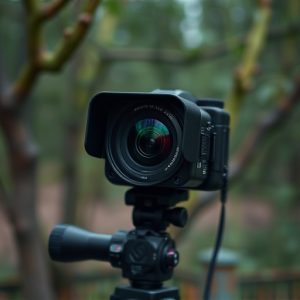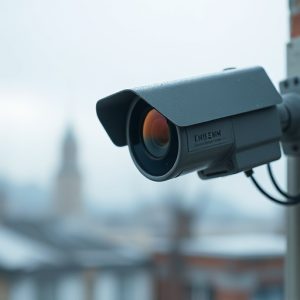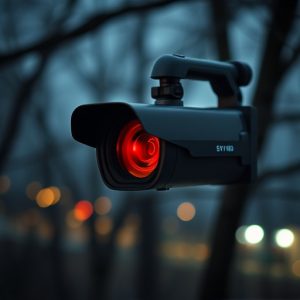Unmasking Hidden Threats: RF Detector Sweep for Concealed Camera Monitoring
Concealed cameras for babysitter monitoring have become a popular tool for parents seeking reassuran…….
Concealed cameras for babysitter monitoring have become a popular tool for parents seeking reassurance, offering live and recorded video feeds via smartphone apps. While providing safety and accountability, their use raises significant privacy concerns regarding child and caregiver rights. Detecting RF signals is crucial for identifying these hidden cameras, with RF detectors sweeping areas to find unique frequencies indicative of covert surveillance. Setting up an RF detector sweep can help ensure family safety and maintain transparency in the digital age, addressing ethical considerations while utilizing technology effectively.
Uncover the hidden risks with our comprehensive guide on detecting concealed cameras, especially those used for babysitter monitoring. Understanding how these devices operate is crucial for ensuring safety in your home. This tutorial delves into the technology behind hidden cameras and RF signals, offering a practical approach to using an RF detector sweep. Learn about the benefits and potential concerns of concealing cameras for parental supervision, and discover best practices for safe and effective implementation.
- Understanding Hidden Cameras: Unveiling the Technology
- Why Concealed Cameras for Babysitter Monitoring? Benefits and Safety Concerns
- Detecting RF Signals: The Basics of an RF Detector Sweep
- Setting Up Your Own RF Detector Sweep for Hidden Cameras
- Real-World Applications and Best Practices for Safe Usage
Understanding Hidden Cameras: Unveiling the Technology
Hidden cameras, also known as concealed or surreptitious cameras, are a sensitive topic in the digital age, especially when it comes to privacy and security. These devices are designed to capture footage discreetly, often with the goal of monitoring activities, ensuring safety, or gathering evidence. In the context of babysitter monitoring, Concealed Cameras for Babysitter Monitoring have gained popularity among parents seeking peace of mind while they’re away from home.
The technology behind these cameras varies, but many modern devices utilize small, high-definition sensors that can be easily integrated into everyday objects like toys, plant pots, or even light switches. They are equipped with wireless connectivity, allowing users to access live feeds and recorded footage remotely through smartphone apps. This advancement in technology raises important discussions about privacy rights, consent, and ethical considerations surrounding the use of hidden cameras for babysitter monitoring.
Why Concealed Cameras for Babysitter Monitoring? Benefits and Safety Concerns
Concealed cameras for babysitter monitoring have become increasingly popular among parents seeking peace of mind while they are away from home. These devices offer a way to observe and record activities in real-time, ensuring that children are safe and their babysitters are fulfilling their duties responsibly. By installing hidden cameras, parents can remotely monitor conversations, interactions, and general behavior, fostering transparency and accountability.
While the benefits of concealed cameras for babysitter monitoring are substantial—from preventing mistreatment to detecting potential safety hazards—there are also safety concerns to consider. Privacy issues arise when thinking about the rights of both children and caregivers, as constant surveillance might make them feel uncomfortable or invade their personal space. Additionally, there’s a risk of false accusations or misunderstandings if not used ethically. Therefore, it’s crucial for parents to understand the legal implications and set clear boundaries, using these tools responsibly to maintain a safe and trusting environment.
Detecting RF Signals: The Basics of an RF Detector Sweep
Detecting RF signals is a crucial step in identifying and locating hidden cameras, especially those used for babysitter monitoring or other surveillance purposes. An RF detector sweep is a process that involves using specialized equipment to scan for radio frequency emissions, which many modern concealed cameras employ to transmit video feeds. These signals can be difficult to detect because they are often on frequencies not commonly associated with typical electronic devices.
The RF detector acts as a sophisticated tool, capable of picking up on these unique frequencies and providing valuable insights into potential hidden camera locations. By sweeping the area in question, users can identify specific frequencies that might indicate the presence of a hidden camera, allowing for further investigation and, if necessary, the disruption of covert surveillance operations.
Setting Up Your Own RF Detector Sweep for Hidden Cameras
Setting up your own RF detector sweep is a powerful way to uncover hidden cameras, especially for parents considering Concealed Cameras for Babysitter Monitoring. The first step is to acquire or borrow a radio frequency (RF) detector capable of picking up wireless signals from CCTV cameras. These devices are designed to detect the specific frequencies used by many hidden cameras, making them an effective tool for security and privacy measures.
Once you have your RF detector, test it in different areas to calibrate its sensitivity. The device should be able to identify and locate signals coming from various distances and sources. When searching for concealed cameras, focus on high-risk areas like playrooms, bedrooms, or kitchens—places where a babysitter might operate a hidden camera. By systematically sweeping the area with your RF detector, you can uncover potential threats and ensure the safety and privacy of your family.
Real-World Applications and Best Practices for Safe Usage
In real-world scenarios, RF detector sweep hidden camera technology finds diverse applications, especially in ensuring safety and security. One prominent use case is by parents employing babysitters; concealed cameras for babysitter monitoring have become a popular tool to ensure the well-being of their children while under someone else’s care. These devices allow parents to remotely observe interactions within their homes, providing peace of mind and enabling them to address any concerning behaviors promptly.
When using such technology, however, it’s crucial to adhere to best practices for safe usage. This includes informing all parties involved about the surveillance system in place—both the parent and the babysitter—to maintain transparency and ensure legal compliance. Additionally, parents should establish clear guidelines on data storage and privacy, respecting the personal boundaries of both children and caregivers while leveraging the benefits of this technology.
The ability to detect hidden cameras using RF detector sweeps is a powerful tool for parents seeking to ensure the safety of their children, especially during babysitter monitoring. By understanding the technology behind concealed cameras and mastering the techniques of RF signal detection, individuals can take proactive measures to safeguard their privacy. This tutorial has provided a comprehensive guide on setting up your own RF detector sweep, highlighting best practices and real-world applications. Remember that while this method offers enhanced security, staying informed about legal implications and ethical considerations is crucial for responsible usage of such advanced technology in the context of Concealed Cameras for Babysitter Monitoring.


